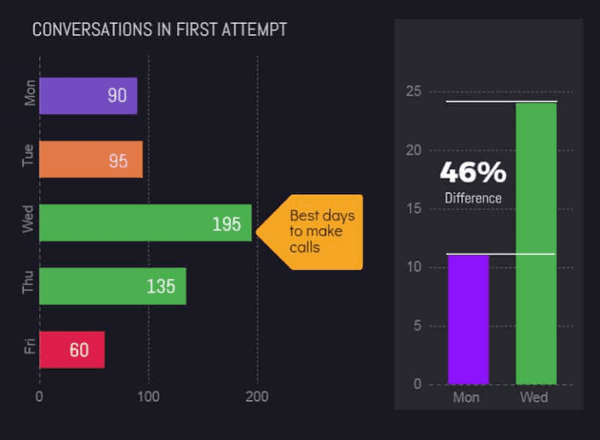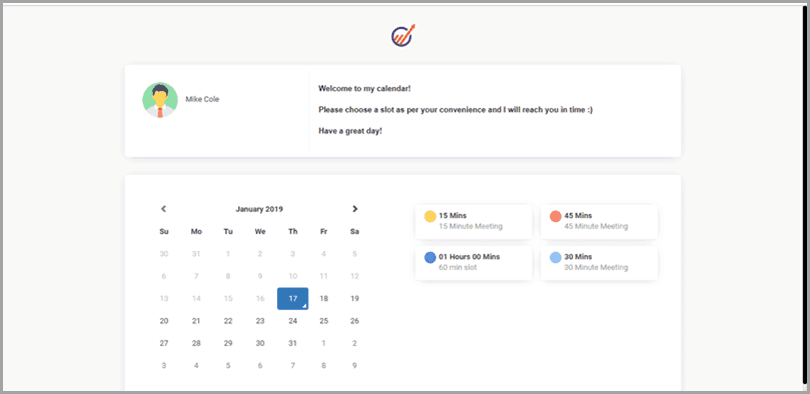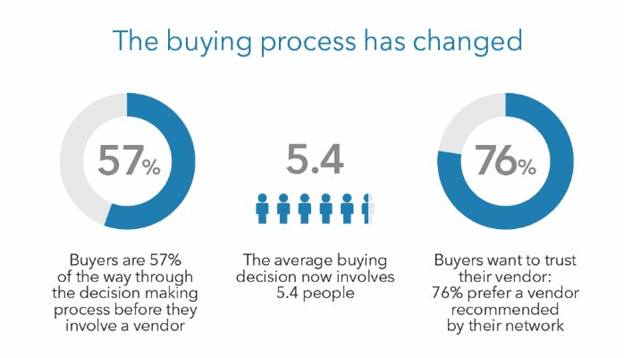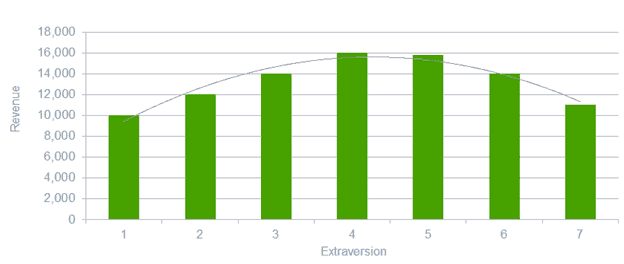Now we have entered 2023, what is your company doing to meet its B2B sales goals? The midpoint of the year is the perfect time to sit down and analyze your B2B sales techniques.
It could be that some of your solution selling techniques are a little stale or predictable. Would-be customers can see you trying to close a deal from a mile away.
Perhaps your sales team has grown so accustomed to doing the same old’ thing that they’ve lost all the enthusiasm and conviction in their approach.
That just won’t do. It’s time to shake things up a little bit and understand what the best way around the pain points are.
In this blog post, we’ll share some of our favorite B2B sales techniques your business should be following.
Table of Contents
What Are B2B Sales?
Before we get into our tips and powerful sales techniques, let’s make sure you have a clear understanding of what do you mean by B2B sales?
The area of B2B or business-to-business sales concerns your company retailing its services or products to other companies.
It’s different than a business-to-consumer or B2C standpoint, in which you’d sell directly to customers.
It’s important to know that key difference which will get you on the road to understanding the B2B sales process.
B2B Sales Techniques Your Business Should Use
- 1. Get on the Phone and Do Some Cold or Warm Calling
- 2. Keep the Ball in Your Court
- 3. Start Smiling
- 4. Make It Easy for People to Book an Appointment with You
- 5. Use SPIN Selling
- 6. Check Your Clothing and Language
- 7. Don’t Become Another Victim of the Sunk Cost Fallacy
- 8. Try Challenger Selling
- 9. Try Reaching out to Old Leads
- 10. Become an Ambivert
- 11. Align with Your Marketing Team
1. Get on the Phone and Do Some Cold or Warm Calling
Most marketers and sales professionals have been conditioned to hate cold calling, which is when you call a prospective customer without ever having had contacted them before.
While cold calling shouldn’t be erased from a sales person’s repertoire entirely, warm calling is a lot easier to do.
This is when you email a lead first and then call them.
According to phone-based marketing service CallPage, time is of the essence when warm calling.
You have to get in touch with the lead almost immediately after they submit your web form to make your sales pitch, at least within the first five minutes.
If you do, you have a 100x higher chance of them answering your call. Make this a part of your sales process, then.
Otherwise, you might be wondering when the best time to contact a lead by phone is.
HubSpot compiled information on this very subject. Wednesday is the most ideal day of the week to make that initial sales call.
Photo courtesy of HubSpot
As for the time, later in the afternoon is best, such as 4 p.m.
This may seem too late to you, right?
After all, aren’t most people leaving the office or mentally preparing to around that time? Yes. That’s why 11 a.m. to 2 p.m. is another popular time-slot.
HubSpot mentions that calling anytime from 7 a.m. to 10 a.m. will net you the worst results.
That’s because people are waking up, eating breakfast, driving to work, and starting their day. They’re not as interested in answering phone calls.
2. Keep the Ball in Your Court
This scenario has probably happened to all sales reps at one point or another: you reach out to a lead by phone or email.
Initially, as decision makers, they’re very responsive and interested in your company and its products/services.
Then, seemingly out of nowhere, they go dark on you. Your sales calls go unanswered, as do your emails.
You can spend countless hours beating yourself up and wondering where you went wrong.
Chances are, it may not have been anything you did at all. Instead of guessing why the lead stopped responding, do something about it.
Your first inclination is probably to send another follow-up email.
You’re going to write in an urgent tone to encourage the lead to get back to you.
You’re also, of course, going to try to make yourself as available as possible so that if they do come back, you can accommodate them.
Doing the latter can be a mistake. We’re not saying don’t accommodate your leads, but don’t be too eager and available.
When you send an email letting the lead know you’ll be waiting for them when they’re ready, the ball is entirely in their court, so to speak.
It could take forever for them to get back to you if they ever do. Why take the risk?
Next time you find yourself in this situation, try writing a somewhat different email.
Put a time limit on your assistance, like 48 hours or a week.
Tell the lead you’ll be happy to help if you hear from them within this time, but that if you don’t, that’s a sign they don’t want to continue the business relationship and you’ll take it as such.
This creates a sense of urgency—or, as it’s called today—FOMO (fear of missing out). That’s a powerful psychological motivator that just might do the trick.
👉Enhance your sales performance with better lead management. Dive into our comprehensive guide to learn more.
3. Start Smiling
Speaking of psychological tricks, when you do a sales meeting with a prospective customer in person, do you greet them with a smile? We certainly hope so.
That’s because smiling makes you come across as approachable, and every sales person wants to be viewed as approachable.
According to data, people will make snap decisions on how nice and likeable you seem to be.
It takes about seven seconds and it happens immediately.
That means by the time you’re done shaking hands with a prospective customer that they’ve already made up their minds about you.
If you smile, you could make a more positive impression.
👉Boost your sales by understanding the true essence of strategic selling. Dive into our comprehensive guide now.
4. Make It Easy for People to Book an Appointment with You
When you first contact a lead, be it via phone, social media, or email, what’s the short-term goal?
You want them to set up a consultation with you, correct?
However, making them do all the work doesn’t seem fair. There’s a decent chance they won’t do it.
You want to make it as easy as possible for leads to book with you.
Possibly the best way to do this is to implement an email signature calendar link.
If you’re using appointment scheduling software like EngageBay’s CRM platform, then you can let your leads and customers set up appointments with you.
The software syncs with most email programs to merge your calendars.
There’s no double-booking with EngageBay.
On those days and times when you’re busy, leads are not allowed to schedule an appointment.
That means you can only meet with a lead when you have the time to dedicate yourself to solving their problems with your products/services.
By adding a link to your calendar scheduler in your email signature, it’s easier than ever for leads to book the appointment.
All they have to do is click and they can begin setting up.
👉Want to elevate your sales performance? Uncover the top sales analysis techniques in our extensive guide! 🏆
5. Use SPIN Selling
While SPIN selling isn’t a new concept, per se, it’s one that’s really beginning to catch on. If you’re not already selling like this in 2020, you’re going to want to start soon.
What exactly is the SPIN selling process?
It’s an acronym.
The S stands for situation questions, the P for problem questions, the I for implication questions, and the N for need/payoff questions. Let’s talk about each of those in more depth now.
- Situation questions: Why is your lead seeking out your products and services? What situation are they in that’s brought them to this point? By asking situation questions, you can figure out the answer.
- Problem questions: What problems is your lead having in his or her life? How will your products/services solve these problems? This is what asking problem questions are geared towards, coming up with a solution tailored to the lead.
- Implication questions: What if the lead doesn’t buy your product/services? By asking implication questions, you can begin to paint the unfortunate picture of what happens when they go without. This makes the lead realize they need to make a purchase and do it soon.
- Need/payoff questions: Finally, there are need/payoff questions. These are centered around product/service benefits and customer success stories. You’re asking questions of the lead the push them towards making a purchasing decision.
The sooner you start asking questions as dictated by SPIN selling, the better you’ll get to know your leads.
Who knows? That could just be the push they need to convert them to customers.
6. Check Your Clothing and Language
Above, we mentioned how important it is to smile when you meet with leads, customers, and even clients and higher-ups.
A smile can help these people form a positive impression of you the first time they meet you.
When you’re selling to a customer, you want to convey confidence above all else.
You must be confident in your selling abilities and confident that your products/services can change the lives of your leads and customers for the better.
How do you convey confidence as much as friendliness?
Keep smiling, yes, but look at what you wear and the body language you present. In terms of clothing,
Real Men Real Style says that professional garb like suits and ties is the best attire for men, but that it depends on the context. If you were to overdress, your perception of approachability drops.
This is just for men. The site goes on to mention that for women, dressing super formally makes them seem less approachable.
Presentation quality is critical for both genders.
As for the colors of your clothing, Real Men Real Style notes that cool colors can aid you in creating that sense of approachability.
Blue especially is a great color to wear. White is another suitable hue, but don’t wear red! It will have the opposite effect.
What about body language? It’s incredibly important, too.
It’s possible to see powerful sales increases just by learning body language basics.
According to this article in Science of People, sales professionals who received a single lesson on body language were able to enjoy 56 percent more sales numbers by employing what they’d learned.
Do you need some tips for improving your own body language? Here are some pointers:
- Make eye contact, but don’t be creepy about it. What’s most important with eye contact is not maintaining it for too long. Be confident in how you lock eyes, too. Doing so can make you seem more approachable as well as engaging and trustworthy. In a sales person, that’s important.
- Don’t fidget. This may be an involuntary thing you do, so be sure to monitor yourself carefully. Wiggling in your seat, moving your legs or feet, tapping your hands, or touching your hair all counts as fidgeting.
- Improve on your handshake if it’s weak. It should be firm, yes, but not like you’re going to break the other person’s hand. Like with eye contact, keeping a handshake going for too long can be awkward.
- Watch the positioning of your legs and arms. Your legs should not be crossed, either at the ankle or at the knees. Ankle crossing conveys a lack of trust while knee crossing can come off as aggressive. Keeping your hands in your lap is a sign of shyness while putting them behind your head can again make you come across as aggressive or bored.
- Keep working on your posture if you need to. Being able to stand and sit straight is not only good for your health, but it also makes you look confident.
7. Don’t Become Another Victim of the Sunk Cost Fallacy
Persistence is key when it comes to powerful sales efforts, but sometimes, so too is knowing when to stop your current sales process.
It’s easy for the best sales reps to become the victims of the sunk cost fallacy. There definitely exist some pain points.
Maybe at one point in your life, you collected something you thought would be worth a lot of money someday.
You kept collecting and collecting, thinking about the money you’d make back in a few years.
With time, you realized the item you thought would be worth so much was decreasing in popularity.
Worst yet, people were selling the item for less than the original price you bought it! Even nostalgia isn’t enough to drive up the prices.
Still, maybe it’ll take a few more years, you think, so you keep buying and adding to the collection even more.
This is the sunk cost fallacy in action.
Even though your collection became worthless and you knew it, it felt too late to turn back.
You had put so much time and money into this collection that it was easier to think that it might be valuable someday than accept the reality, that that wasn’t going to happen.
B2B salespeople can fall into the trap that is the sunk cost fallacy. When you nurture a lead from the very beginning, you certainly want to see them convert.
That’s why it’s so frustrating and even heartbreaking when the lead stops responding.
You don’t want to start from square one, so you keep calling and sending emails
In some cases, you may even reach out via social media. You even make a few great offers that usually only loyal customers get.
You can waste time and energy for far too long on someone who’s not worth either.
That’s why the general rule is to stop communication attempts after eight tries and no responses.
You can someday return to this lead (more on this later), but for now, you’ve got to let them go.
Read also: B2B vs B2C Marketing — 8 Things You Didn’t Know
8. Try Challenger Selling
If you haven’t heard of Challenger selling yet, you will this year for certain.
Brent Adamson and Matthew Dixon wrote a book called The Challenger Sale several years ago that’s really catching on.
In the book, Adamson and Dixon explain that salespeople have six personality types.
Each personality type changes sales approaches. The Challenger is one such personality. These people have the following traits:
- They, of course, will challenge people to think differently about the way they’re doing things. Is your lead’s current approach really working for them?
- They study the lead thoroughly before reaching out to them.
- They’re optimistic but sometimes controversial.
- They can debate a point incredibly well.
Challengers are good people to have on your team.
According to the book, when the salespeople of 90 companies were categorized by the personality types,
Challengers had the most sales success. Whether you train people to implement some traits of the Challenger or you hire more salespeople with those traits, this shift in your sales team can be for the better.
9. Try Reaching out to Old Leads
If it’s been a year or more, you still have a lead’s contact information, and you believe it’s accurate, then why not try contacting them?
After all, the buying process is rarely the same from one year to another. Just take a look at this graphic to understand what we mean.
Photo courtesy of Albacross
Perhaps whatever didn’t quite work out a year or so ago with the lead would now be an effortless, streamlined process.
The only way to find out is to try.
Again, remember the sunk cost fallacy we just discussed.
You can’t waste too much time on unresponsive leads, be those brand-new or older ones. If it’s been eight attempts and you hear nothing back, move on.
Read also: Upselling Techniques: 10 Expert Secrets to Skyrocket Your Sales Performance
10. Become an Ambivert
Salespeople are generally known for their warm, inviting, outgoing personalities, emphasis on the outgoing. In short, they’re extroverts.
They can talk to just about anyone about anything without breaking a sweat.
Introverts may have shied away from a career in sales for that very reason.
These types of people find small talk difficult and may have anxiety juggling too many conversations at once.
It turns out that introverts aren’t best-suited for sales jobs. Neither are extroverts.
The most successful salespeople are ambiverts.
This is the best of both worlds. They can talk with people but won’t chat your ear off. They’re more introspective and can back off if need be.
According to a Psychological Science report, salespeople who were classified as ambiverts tended to sell more compared to extroverts.
Their revenue was 32 percent greater.
Photo courtesy of SuperOffice
11. Align with Your Marketing Team
Our final sales tip is to check in with your marketing team regularly.
After all, you could be working hard and thinking you’re doing well, but if there’s a misalignment with your marketing team, that brings the whole company bottom line down.
Misalignment is one of the biggest pain points for business.
You must make sure your sales and marketing teams have the same goals and are on the same page.
Without frequent communication, it’s possible for the marketing team to be working on the same job as the sales team without even knowing it.
EngageBay’s B2B CRM platform allows for more efficient sales and marketing alignment.
With a unified tool, it’s easier for these two teams to track what the other is doing, and both work towards common goals within the sales process and converting customers.
How to Overcome Modern Sales Challenges?
From people hanging up the phone to never responding to your emails, being a sales professional isn’t easy.
If you’re not as successful at sales as you wish you were, don’t despair.
What you might do instead is review past data to see if the selling techniques you’re using aren’t quite hitting the mark.
If they’re not, then why not replace what you’re doing with any of the 11 tips we shared?
That’s a pretty good means of turning your situation around and start achieving more through focussed sales efforts!
Conclusion
Whether it’s the dress code, body language, or the best sales techniques you want to focus on with your sales team this year, the above 11 tips and selling techniques should help you achieve powerful sales goals. Good luck!
EngageBay is a comprehensive Customer Lifecycle Management (CLM) software for growing companies. CLM covers all aspects of customer management across sales, marketing, and support.
Check out EngageBay’s offerings – a powerful CRM, Marketing Automation, and Customer support software to grow your business.
<<Prioritize, track, monitor and close deals like never before
<<Sales management software to empower your sales team to close more deals




